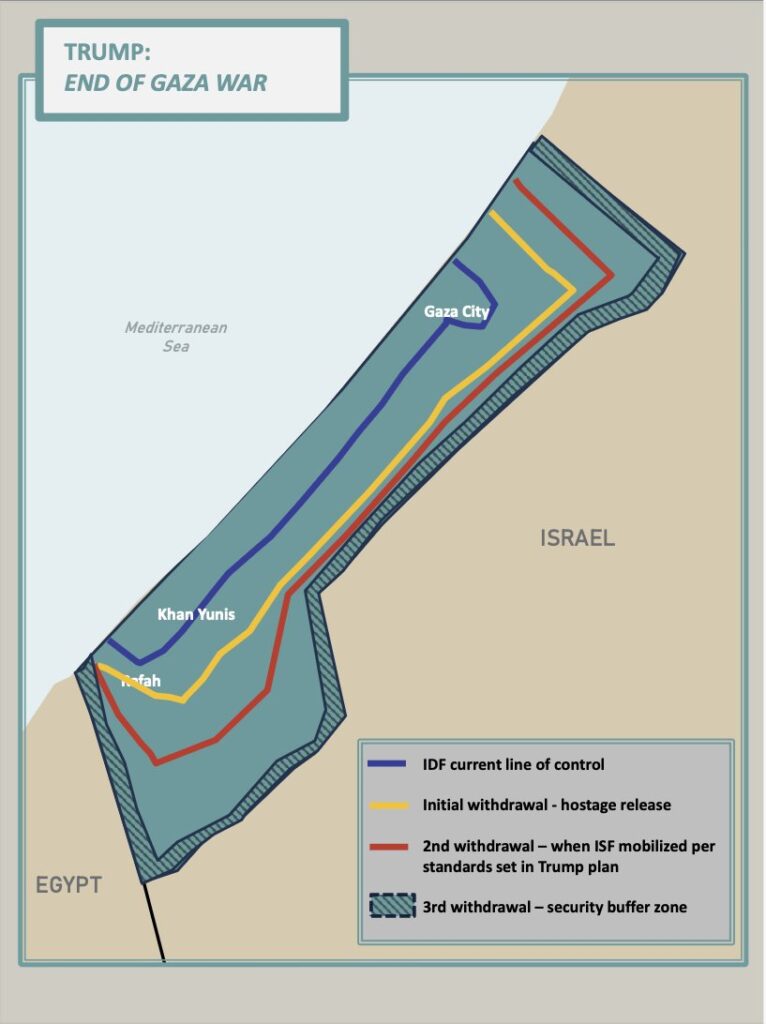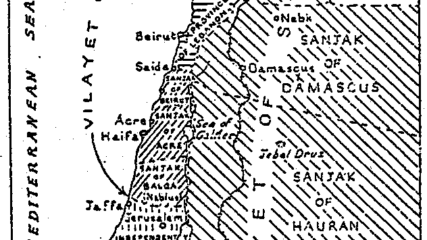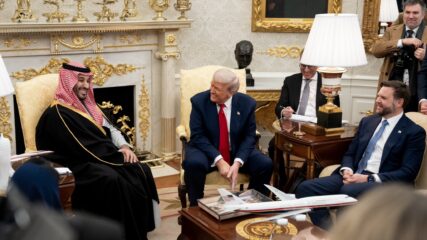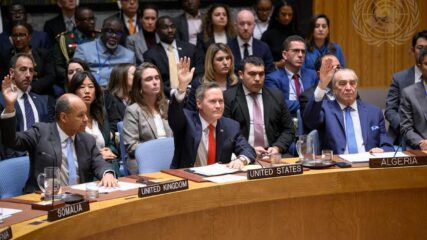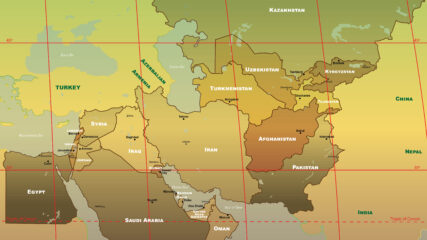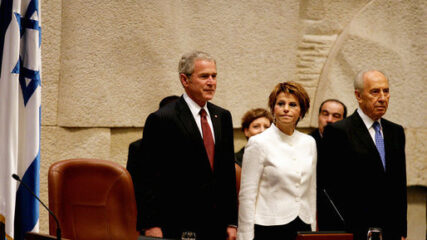September 29, 2025
Source: https://www.bbc.com/news/articles/c70155nked7o
The White House released President Donald Trump’s plan to halt the Hamas-Israel war during his media appearance with Israeli Prime Minister Benjamin Netanyahu on September 29, 2025. Leaked versions of the proposal, originated by U.S. negotiator Steve Witkoff, called it a 21-point plan, but the official version has 20 points.
In context: The plan is consistent with long-term American foreign policy to mediate, negotiate and wind down aspects of the Arab-Israeli and Palestinian-Israel conflicts. Since Israel was founded in 1948, American mediation has been central for resolving portions of the conflict through direct and indirect talks, including those focused on ceasefires, water disputes, border arrangements, the future of Jerusalem and more. Such U.S. involvement helped end the October 1973 war; mediated the 1978 Camp David Accords and the 1979 Egyptian-Israeli peace treaty; proposed the 1982 Reagan Plan; played a central role in convening the 1991 Madrid Middle East peace conference; unfolded the 1998 Wye River Memorandum; offered the 2000 Clinton Parameters, the 2001 Tenet ceasefire plan, the 2001 Mitchell Report to reduce violence and the 2020 Trump peace plan; and negotiated the 2020 Abraham Accords. The Palestine Liberation Organization rejected any negotiations with Israel until the secret talks that produced the 1993 Oslo Accords, and Hamas since its founding in 1988 has not accepted any negotiating framework with Israel that aims to end its armed struggle or requires it to accept Israel as a sovereign state.
This 2025 Trump plan aims to achieve Israel’s war goals: the release of all hostages; the end of Hamas as a military and political force in the Gaza Strip; Gaza’s demilitarization; Israeli security control over the Strip; and a peaceful transition to a civilian government for Gaza under the auspices of an International Stabilization Force (ISF). The hostage release, with corresponding freedom for some Palestinian prisoners, must come within 72 hours. The Israeli military will then withdraw in phases but maintain a security perimeter inside Gaza. Any barriers to humanitarian aid will end, with distribution under the direction of the ISF and international bodies such as the United Nations and Red Crescent.
Gaza governance falls under a Board of Peace chaired by Trump and including former British Prime Minister Tony Blair. The civilian administration combines Palestinians and foreign experts, while Arab states and other countries form the ISF with guidance from Egypt and Jordan.
Trump and his board will take the lead in rebuilding and economically redeveloping Gaza in a plan that could resemble what the president outlined in February, minus the forced evacuation of the enclave. Gazans may decide to stay or go.
Hamas members also have a choice: Renounce violence and stay in Gaza under an amnesty or leave. The Palestinian Authority is shut out of Gaza until it completes extensive reforms. Meanwhile, for the first time in a decade, the United States facilitates direct Israeli-Palestinian talks on a political resolution, with an eye toward possibly establishing “a credible pathway to Palestinian self-determination and statehood.”
If Hamas rejects or reneges on the plan, Israel has full U.S. support to pursue its goals militarily.
— Ken Stein and Michael Jacobs, September 30, 2025
President Donald J. Trump’s Comprehensive Plan to End the Gaza Conflict:
1. Gaza will be a deradicalized terror-free zone that does not pose a threat to its neighbors.
2. Gaza will be redeveloped for the benefit of the people of Gaza, who have suffered more than enough.
3. If both sides agree to this proposal, the war will immediately end. Israeli forces will withdraw to the agreed upon line to prepare for a hostage release. During this time, all military operations, including aerial and artillery bombardment, will be suspended, and battle lines will remain frozen until conditions are met for the complete staged withdrawal.
4. Within 72 hours of Israel publicly accepting this agreement, all hostages, alive and deceased, will be returned.
5. Once all hostages are released, Israel will release 250 life sentence prisoners plus 1,700 Gazans who were detained after October 7th, 2023, including all women and children detained in that context. For every Israeli hostage whose remains are released, Israel will release the remains of 15 deceased Gazans.
6. Once all hostages are returned, Hamas members who commit to peaceful coexistence and to decommission their weapons will be given amnesty. Members of Hamas who wish to leave Gaza will be provided safe passage to receiving countries.
7. Upon acceptance of this agreement, full aid will be immediately sent into the Gaza Strip. At a minimum, aid quantities will be consistent with what was included in the January 19, 2025, agreement regarding humanitarian aid, including rehabilitation of infrastructure (water, electricity, sewage), rehabilitation of hospitals and bakeries, and entry of necessary equipment to remove rubble and open roads.
8. Entry of distribution and aid in the Gaza Strip will proceed without interference from the two parties through the United Nations and its agencies, and the Red Crescent, in addition to other international institutions not associated in any manner with either party. Opening the Rafah crossing in both directions will be subject to the same mechanism implemented under the January 19, 2025, agreement.
9. Gaza will be governed under the temporary transitional governance of a technocratic, apolitical Palestinian committee, responsible for delivering the day-to-day running of public services and municipalities for the people in Gaza. This committee will be made up of qualified Palestinians and international experts, with oversight and supervision by a new international transitional body, the “Board of Peace,” which will be headed and chaired by President Donald J. Trump, with other members and heads of state to be announced, including former Prime Minister Tony Blair. This body will set the framework and handle the funding for the redevelopment of Gaza until such time as the Palestinian Authority has completed its reform program, as outlined in various proposals, including President Trump’s peace plan in 2020 and the Saudi-French proposal, and can securely and effectively take back control of Gaza. This body will call on best international standards to create modern and efficient governance that serves the people of Gaza and is conducive to attracting investment.
10. A Trump economic development plan to rebuild and energize Gaza will be created by convening a panel of experts who have helped birth some of the thriving modern miracle cities in the Middle East. Many thoughtful investment proposals and exciting development ideas have been crafted by well-meaning international groups and will be considered to synthesize the security and governance frameworks to attract and facilitate these investments that will create jobs, opportunity, and hope for future Gaza.
11. A special economic zone will be established with preferred tariff and access rates to be negotiated with participating countries.
12. No one will be forced to leave Gaza, and those who wish to leave will be free to do so and free to return. We will encourage people to stay and offer them the opportunity to build a better Gaza.
13. Hamas and other factions agree to not have any role in the governance of Gaza, directly, indirectly, or in any form. All military, terror, and offensive infrastructure, including tunnels and weapon production facilities, will be destroyed and not rebuilt. There will be a process of demilitarization of Gaza under the supervision of independent monitors, which will include placing weapons permanently beyond use through an agreed process of decommissioning, and supported by an internationally funded buy-back and reintegration program, all verified by the independent monitors. New Gaza will be fully committed to building a prosperous economy and to peaceful coexistence with their neighbors.
14. A guarantee will be provided by regional partners to ensure that Hamas, and the factions, comply with their obligations and that New Gaza poses no threat to its neighbors or its people.
15. The United States will work with Arab and international partners to develop a temporary International Stabilization Force (ISF) to immediately deploy in Gaza. The ISF will train and provide support to vetted Palestinian police forces in Gaza and will consult with Jordan and Egypt, who have extensive experience in this field. This force will be the long-term internal security solution. The ISF will work with Israel and Egypt to help secure border areas, along with newly trained Palestinian police forces. It is critical to prevent munitions from entering Gaza and to facilitate the rapid and secure flow of goods to rebuild and revitalize Gaza. A deconfliction mechanism will be agreed upon by the parties.
16. Israel will not occupy or annex Gaza. As the ISF establishes control and stability, the Israel Defense Forces (IDF) will withdraw based on standards, milestones, and timeframes linked to demilitarization that will be agreed upon between the IDF, ISF, the guarantors, and the United States, with the objective of a secure Gaza that no longer poses a threat to Israel, Egypt, or its citizens. Practically, the IDF will progressively hand over the Gaza territory it occupies to the ISF according to an agreement they will make with the transitional authority until they are withdrawn completely from Gaza, save for a security perimeter presence that will remain until Gaza is properly secure from any resurgent terror threat.
17. In the event Hamas delays or rejects this proposal, the above, including the scaled-up aid operation, will proceed in the terror-free areas handed over from the IDF to the ISF.
18. An interfaith dialogue process will be established based on the values of tolerance and peaceful coexistence to try and change mindsets and narratives of Palestinians and Israelis by emphasizing the benefits that can be derived from peace.
19. While Gaza redevelopment advances and when the PA reform program is faithfully carried out, the conditions may finally be in place for a credible pathway to Palestinian self-determination and statehood, which we recognize as the aspiration of the Palestinian people.
20. The United States will establish a dialogue between Israel and the Palestinians to agree on a political horizon for peaceful and prosperous coexistence.

